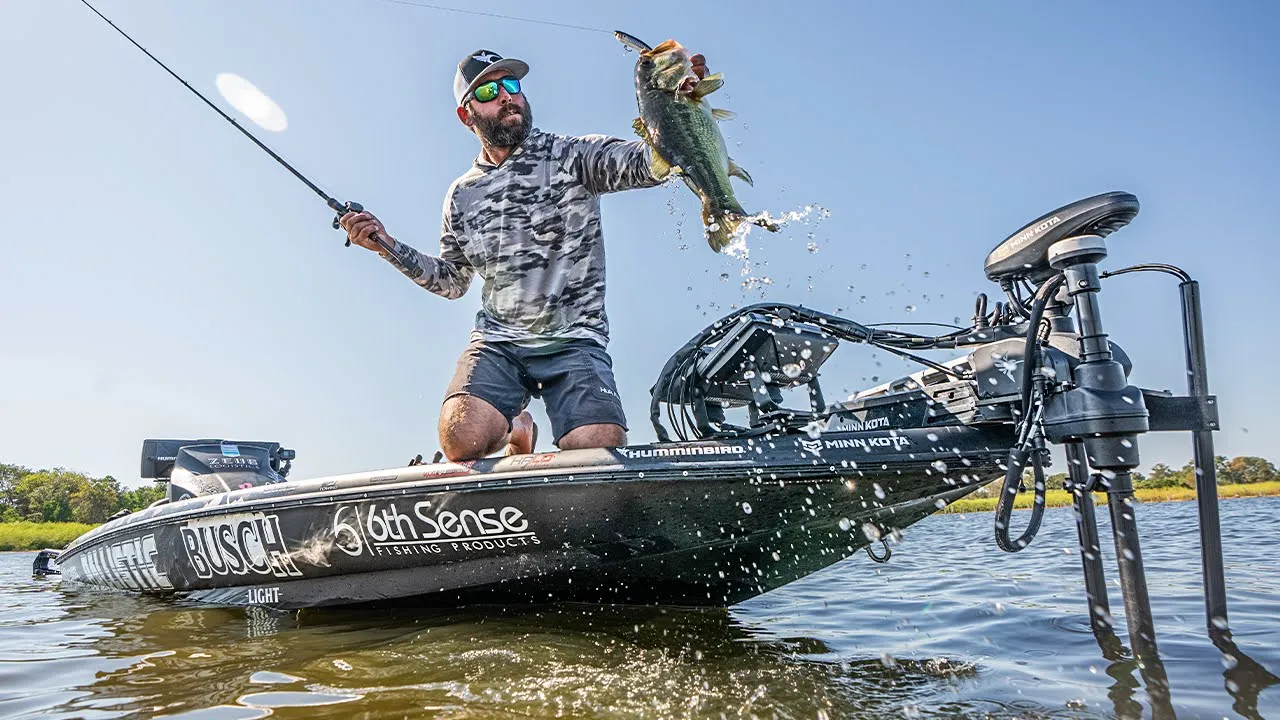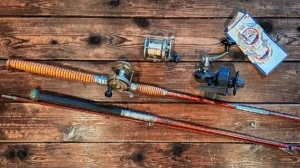Wired2fish staffers caught up with Lee Livesay on Texas’s famed Lake Fork for a lesson on topwater bass fishing with a stealthy approach. Low water levels repositioned the bass from the bank to the next available shallow water cover. Skinny water can mean spooky fish. Livesay details how to find prime fish-holding spots during low water and catch them using a quiet boat control approach with his Minn Kota Raptors.
FEATURED PRODUCT (retail links)
- TOPWATER – 6th Sense Catwalk Topwater Walking Bait: Buy at Tackle Warehouse
- ROD – Halo HFX Series Cranking Rod 7′ Medium: Buy at Tackle Warehouse, Buy at Bass Pro Shops
- REEL – Shimano Metanium MGL 150 Casting Reel, 7.1:1: Buy at Tackle Warehouse, Buy at Bass Pro Shops
- LINE – Sunline FX2 Braided Line Dark Green, 50-pound: Buy at Tackle Warehouse
*Boat equipment links below.
Livesay emphasizes the importance of reading the lake’s nuanced structure. Fish relocate closer to visible structures such as stumps and docks when water levels drop. Mapping is an essential reconnaissance tool for identifying likely feeding spots such as shell beds, roadbeds, old pond dams, points, brush piles, and otherwise hard-bottom areas. He walks us through his mapping approach, then takes to side imaging to put “eyes on” in search of forage like gizzard shad, brim, and even schools of bass.
Livesay goes into stealth mode when he’s built a milk run of productive-looking spots at the console. Heavily pressured bass on fisheries like Lake Fork get conditioned to non-natural sounds. In response, he’s frequently uses shallow water anchors to pin the boat in place while staying quiet. With his boat as a deer stand, Livesay goes into topwater bass fishing mode and fan casts the area with walking baits.
FISH FINDERS & BOAT SETUP
- SHALLOW WATER ANCHORS – Minn Kota Raptor, 8′: Buy at Tackle Warehouse, Buy at Bass Pro Shops
- MAPPING – Humminbird LakeMaster VX Premium Digital Charts, Midsouth States V1: Buy at Tackle Warehouse, Buy at Bass Pro Shops, Buy at Humminbird
- FISH FINDER – Humminbird HELIX 12 CHIRP MEGA SI+ GPS G4N: Buy at Tackle Warehouse, Buy at Bass Pro Shops
- FORWARD-FACING SONAR (FFS) – Humminbird MEGA Live TargetLock: Buy at Tackle Warehouse, Buy at Bass Pro Shops
- 360 SONAR – Humminbird MEGA 360 Imaging: Buy at Tackle Warehouse, Buy at Bass Pro Shops
- TROLLING MOTOR – Minn Kota Ultrex MSI+, 52”, 36v (112 lbs): Buy at Tackle Warehouse, Buy at Bass Pro Shops
While many topwater baits will work, he favors fast-moving walking baits. By working the bait fast, he prevents bass from getting a good look at the lure while triggering aggressive reaction strikes. A quality walking bait casts a country mile, too, another plus when covering water in stealth mode. Lastly, he shares his rod and line setup for targeting big topwater bass.












